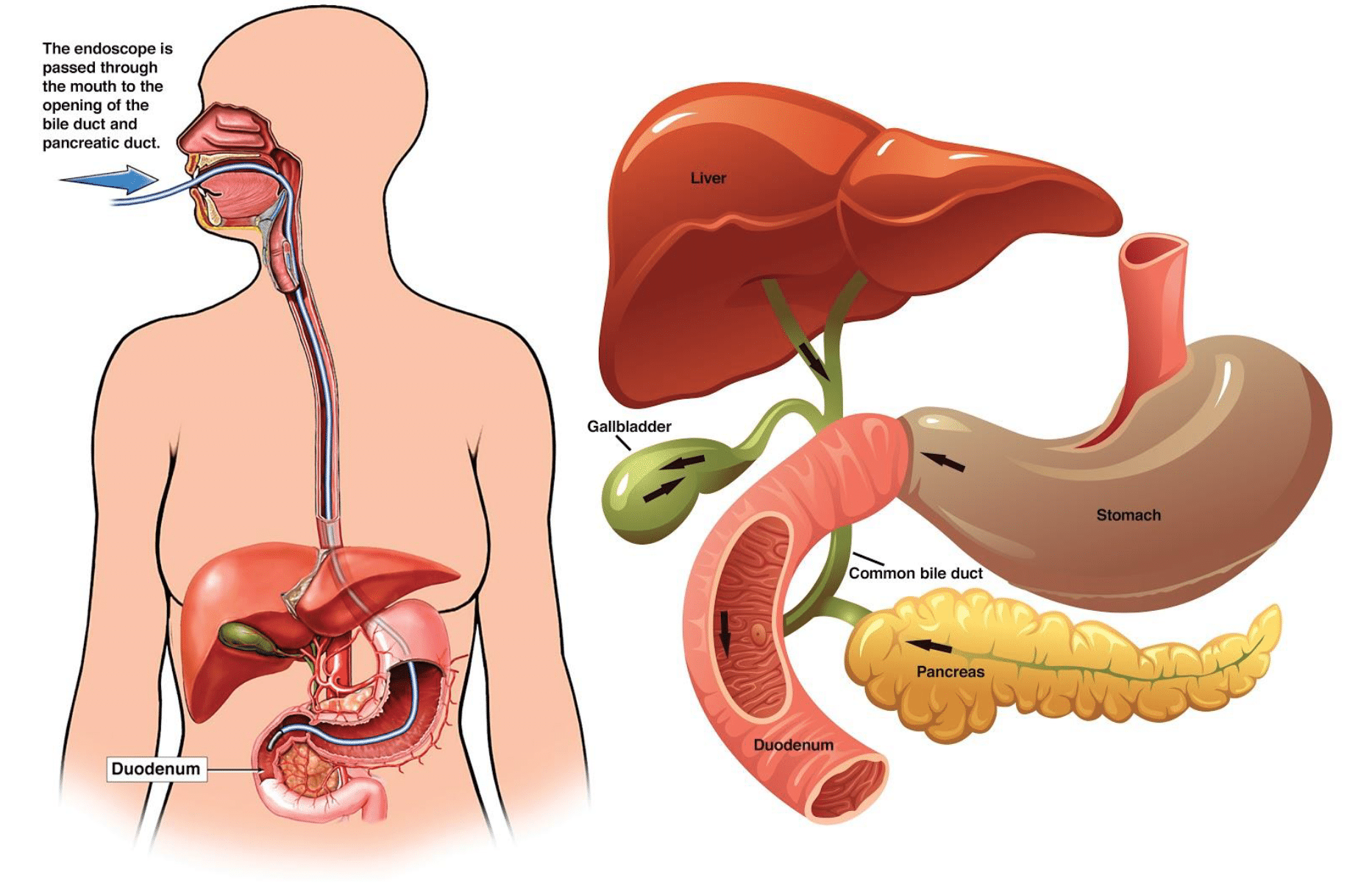
ERCP
- Endoscopic retrograde cholangio-pancreatography (ERCP) is a diagnostic test to examine:
- the duodenum (the first portion of the small intestine),
- the papilla of Vater (a small nipple-like structure with openings leading to the bile ducts and the pancreatic duct),
- the bile ducts, and
- the gallbladder and the pancreatic duct.
The procedure is performed by using a long, flexible, viewing instrument (a duodenoscope) about the diameter of a pen. The duodenoscope can be directed and moved around the many bends of the stomach and duodenum. The modern duodenoscope uses a thin fiber-optic bundle to transmit light to the tip of the endoscope, and a thin wire with a chip also at the tip of the endoscope to transmit digital video images to a TV screen. The duodenoscope is inserted through the mouth, through the back of the throat, down the food pipe (esophagus), through the stomach and into the duodenum. Once the papilla of Vater is identified, a small plastic catheter (cannula) is passed through an open channel of the endoscope into the opening of the papilla, and into the bile ducts and/or the pancreatic duct.
- Endoscopic retrograde cholangio
- the duodenum
- the papilla of Vater
- the bile ducts
Contrast material (dye) is then injected and X-rays are taken of the bile ducts and the pancreatic duct. Another open channel in the endoscope also allows other instruments to be passed through it in order to perform biopsies, to insert plastic or metal stents or tubing to relieve obstruction of the bile ducts or pancreatic duct caused by cancer or scarring, and to perform incisions by using electrocautery (electric heat).
- ERCP is a diagnostic procedure designed to examine diseases of the liver, bile ducts and pancreas.
- ERCP is usually best performed under general anesthesia. It may be done using IV sedation.
- There is a low incidence of complications.
- ERCP can provide important information that cannot be obtained by other diagnostic examinations, for example, abdominal ultrasound, CT scan, or MRI.
- Frequently, therapeutic measures can be performed at the time of ERCP to remove stones in the bile ducts or to relieve obstruction of the bile ducts.
